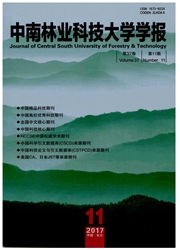

 中文摘要:
中文摘要:
土地荒漠化是当前世界十大环境问题之一,对人类的生存和发展构成了严重威胁。通过黑河流域中游荒漠区建立的荒漠化综合防治试验站对土壤各层含水率、植被生物量、盖度、地下水埋深、降水量等9a(2006—2014年)长期定位监测,采用特征参数算法、相关和多元回归分析方法,研究了植被生长和水分的年内、年际变化特征及相关回归模型。结果表明:(1)土壤平均质量含水率、植被平均生物量、平均盖度、地下水埋深、降水量年均分别为2.38%、136.13g/m2、11.01%、271.63cm、141.56mm年际变化幅度从大到小依次为土壤质量含水率〉植被平均盖度〉降水量〉植被平均生物量〉地下水埋深,其中土壤质量含水率和植被平均盖度呈波动性增加趋势,植被平均生物量、地下水埋深、降水量呈波动性略有减小趋势。(2)在一年的植物生长季的3~11月份期间,降水量、地下水埋深变化步调基本一致,各层土壤含水率变化步调基本一致。(3)植被平均盖度与土壤各层质量含水率中度正相关,与降水量低度相关,与其它因子关系极弱。(4)植被平均盖度模型预测准确率可达79.2%,误差平均为0.381,解释变差可达89.9%。本研究可为荒漠化防治中的水资源管理以及退耕还林、天然林保护、黑河流域综合治理等工程对水资源影响的评估等提供科技支撑和参考数据。
 英文摘要:
英文摘要:
Land desertification is one of the world' s top ten environmental problems, and constitutes the serious threat for human survival and development. In order to explore response natural desert plant growth to changes of water in desertification control, the test station of desertification control in Hongshawo had been established in in Heihe middle reaches in 2006 by the academy of water resource conservation forests of Qilian mountains in Gansu province, and had been long-term location and multi-factor monitoring. At present, the data about meteorological, hydrological, soil, vegetation which related desertification and sandstorm occurrence and development had been obtained for 9 consecutive years. In this paper, extracted data about soil moisture content of each layer, vegetation biomass, coverage, groundwater depth and rainfall, which had come from test station of desertification control in Hongshawo had been set up in desert zones in Heihe middle reaches, and the algorithm of characteristic parameters, correlation and multiple regression analysis method had been used, and response characteristics of natural desert plant growth and changes of water interannual and annual variance had been studied. Results show that: (1) The average moisture content rate of soil, the average vegetation biomass, coverage, groundwater depth and precipitation respectively was 2.38%, 136.13 g/m2, 11.01%, 271.63 cm, 141.56 mm. Interannual variation order from large to small was that moisture content rate of soil 〉 coverage 〉 precipitation 〉 biomass 〉 groundwater depth. The average moisture content of soil and average vegetation coverage showed a trend of volatility increase, but the average vegetation biomass, groundwater depth and precipitation showed a trend of slightly volatility decrease in the research area. (2) In the growingseason from march to November, the annual variance pace of each layer soil moisture content were resemblance, and the changes of average vegetation coverage and biomass were non-significa
 同期刊论文项目
同期刊论文项目
 同项目期刊论文
同项目期刊论文
 期刊信息
期刊信息
